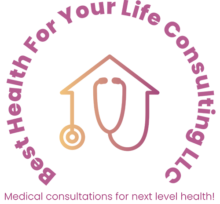High blood pressure or hypertension is a preventable and treatable disease. Unfortunately, this disease continues to kill and disable many people. It is a common cause of death, stroke, heart failure, and the second leading cause of kidney failure behind diabetes.
Other than having a genetic predisposition, a major cause of hypertension is the diet that we eat. Foods containing salt and too many calories (also a major cause of obesity, diabetes, cancer, high cholesterol, heart disease and stroke) are the major cause of hypertension. Diets high in fast food diets are high in sodium and are bad for blood pressure as well. Studies have shown that eating low salt diets, diets that are high in fruits, vegetables, eating low-fat dairy products and no more than one meat dish per day can lower blood pressure as much as any single blood pressure medication.. In those who have not yet developed hypertension, this diet can prevent or dramatically slow the development of hypertension. In those who already have hypertension, it can be controlled and the complications that devastate the body can be prevented. The DASH (Dietary Approaches to Stop Hypertension) Eating Plan is a flexible and balanced eating plan that helps create a heart-healthy eating style for life.
https://www.nhlbi.nih.gov/education/dash-eating-plan
Multiple studies now show that nearly every patient with hypertension can have their blood pressure controlled to the recommended goal of less than 130/80 (optimal blood pressure is less than 120/80, should be at least consistently less than 130/80), yet less than 1 in 3 are at that goal. In those with higher blood pressure, it is because these patients are either not following the recommended eating habits consistently, not taking their medication or/not prescribed enough of the correct medications by their physician. Most patients will require two and usually three medications to control their blood pressure.
Each time you are seen, you should ask your physician for your blood pressure reading. If the top number (systolic blood pressure (SBP) is higher than 130 or the bottom number (diastolic blood pressure (DBP) is greater than 80, you should insist that a plan be discussed to lower it below that level.


